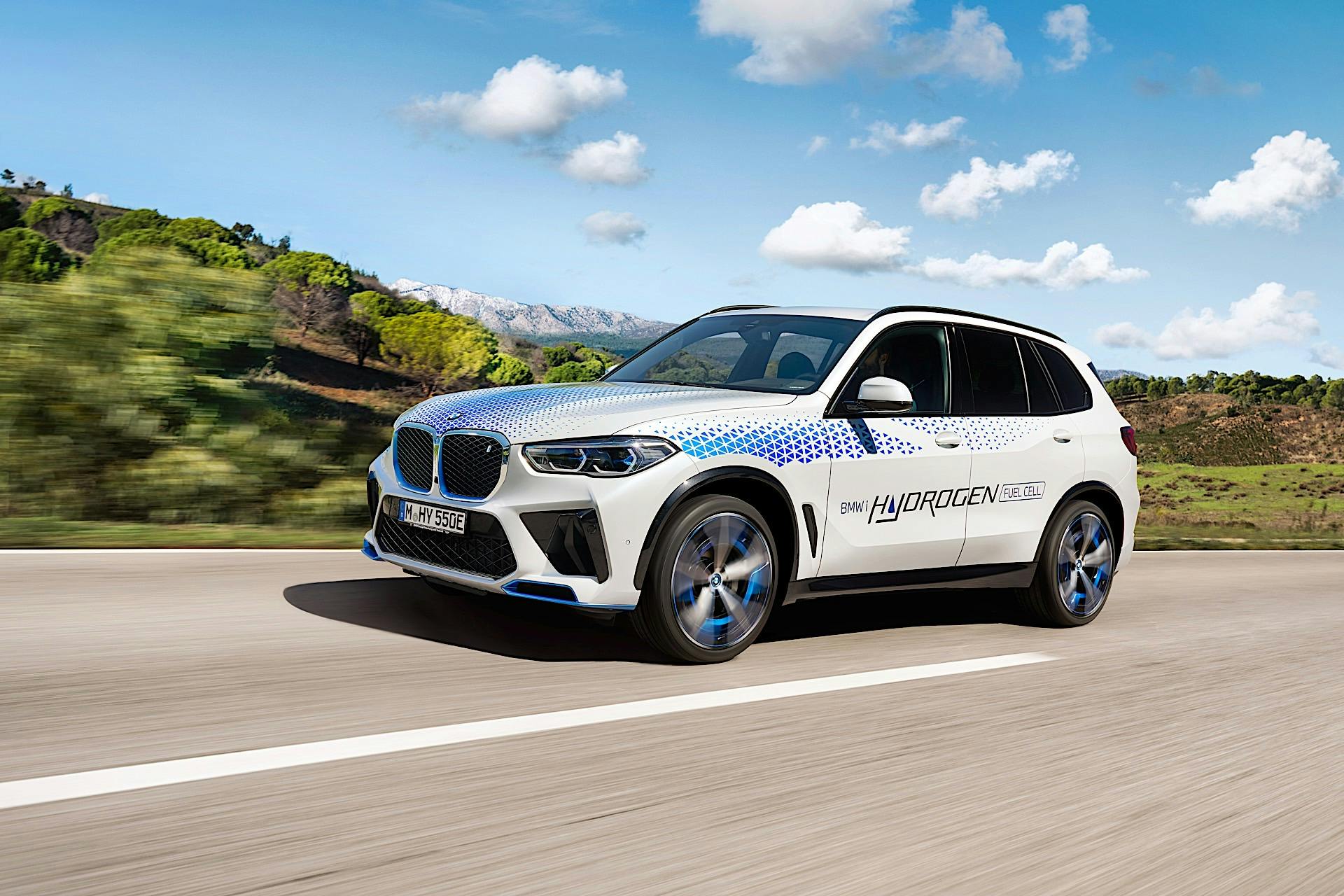BMW will use the 2021 Munich auto show to introduce its first hydrogen fuel cell vehicle: the iX5 Hydrogen. Based closely on the X5 crossover, the BMW iX5 Hydrogen promises to offer the brand’s renowned driving dynamics in another sustainable powertrain. Although the fuel cell system is still currently under series development, BMW aims to have a small series of production iX5 Hydrogen models for testing and demonstration purposes by the end of the next year.
Grouped under the i sub-brand, the BMW iX5 Hydrogen has the potential to become another viable solution for sustainable mobility and complement battery-electric vehicles in the lineup. BMW says that the development of hydrogen fuel cell powertrains started as a proposed solution to those who don’t have easy access to the charging infrastructure for EVs, frequently drive long distances, or want additional flexibility.
To further distinguish the iX5 Hydrogen from a standard X5, it gets plenty of design cues that hint at its sustainable focus. Right off the bat, you’ll notice the “BMW i Hydrogen” decal emblazoned across the sides of the crossover. You also get a lot of blue water-like accents on the hood, fenders, and just under the windows. The aero-focused 22-inch alloy wheels, lower front, and rear fascia, and the kidney grille also have blue accents to denote the iX5’s status as a member of the BMW i family. Some of the exterior bits like the lower rear trim piece are made via 3D printing at BMW Group’s Additive Manufacturing Campus.
The Pirelli tires on the iX5 Hydrogen are sustainably produced from natural rubber and rayon. Raw materials are extracted in compliance with Forest Stewardship Council (FSC) organization standards. Power comes from a 170-hp fuel cell stack that converts hydrogen and oxygen to electricity, which is then stored in a battery before powering a 374-hp electric motor. Another byproduct of the chemical reaction is water, which is ejected via an exhaust pipe. Two 700-bar carbon-fiber-reinforced plastic tanks hold about six kilos of hydrogen and can be filled in 3 to 5 minutes.
Citing a report from the International Energy Agency (IEA), BMW notes that hydrogen has a lot of potential as an energy source. Its ease of storing and transport makes it versatile enough for a broad range of applications. However, BMW notes that this will depend on the amount of sustainably produced hydrogen and the supporting infrastructure.
Many industrialized nations are pursuing hydrogen as a viable option and backing them up with a road map and projects to make them more feasible. BMW is supporting initiatives that accelerate responsible hydrogen production in its home market of Germany and throughout Europe as part of projects under the Important Projects of Common European Interest (IPCEI). These programs, which are supported by Germany’s Federal Ministry of Economic Affairs and Federal Ministry of Transport, span a full value chain ranging from hydrogen production to transport and industry applications.
BMW’s i Hydrogen NEXT initiative is one of the results of its partnership with Toyota. The individual cells are supplied by Toyota but BMW designs the fuel cell stack and drive system. When it eventually goes into low-volume production, the BMW iX5 Hydrogen will likely be sold mainly in Europe where there are more hydrogen fueling stations. In the event that it becomes available in North America, it’s likely going to be limited only to California just like FCVs currently on sale like the Toyota Mirai and Hyundai Nexo.

